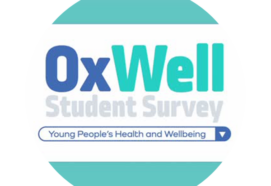TRIGGER WARNING: Please be aware that this podcast explores themes around the topics of self-harm and suicide.
In this Papers Podcast, Dr. Jocelyn Meza discusses her co-authored JCPP paper ‘Practitioner Review: Common elements in treatments for youth suicide attempts and self-harm – a practitioner review based on review of treatment elements associated with intervention benefits’ (https://doi.org/10.1111/jcpp.13780). Jocelyn is the lead author.
There is an overview of the paper, methodology, key findings, and implications for practice.
Discussion points include:
- The best way to talk about suicide and self-harm in a sensitive and non-stigmatising way.
- The motivation behind the practitioner review and the methodological challenges faced.
- Suicide and self-harm as a global issue and the international differences.
- How to apply the findings as a child and adolescent mental health professional and/or as a practitioner.
- The research implications of the findings, and the message for parents/carers, and teachers.
In this series, we speak to authors of papers published in one of ACAMH’s three journals. These are The Journal of Child Psychology and Psychiatry (JCPP); The Child and Adolescent Mental Health (CAMH) journal; and JCPP Advances.
Subscribe to ACAMH mental health podcasts on your preferred streaming platform. Just search for ACAMH on; SoundCloud, Spotify, CastBox, Deezer, Google Podcasts, Podcastaddict, JioSaavn, Listen notes, Radio Public, and Radio.com (not available in the EU). Plus we are on Apple Podcasts visit the link or click on the icon, or scan the QR code.
TRIGGER WARNING: Please be aware that this podcast explores themes around the topics of self-harm and suicide.

Jocelyn Meza, PhD, received her B.A. in Psychology at UCLA, her Ph.D. in Clinical Science at UC Berkeley and her 2-year clinical internship at UCSF. Her research focuses on understanding the risk and protective factors associated with self-harm and suicide in vulnerable populations. Currently, as a UCLA NIH T32 fellow, her research examines predictors and moderators of positive treatment outcomes in a randomized control trial aimed at reducing suicide and self-harm in adolescents. Next year she will transition back to UCSF to complete her Chancellor’s Postdoctoral Fellowship under the mentorship of Marina Tolou-Shams, Ph.D. As a Chancellor’s Fellow she will be examining the predictors associated with non-suicidal self-injury among court-involved, non-incarcerated Latinx youth. Her research aims to better understand how to predict and prevent self-harm and suicide, a growing global and public health concern.
Transcript
[00:00:01.339] Mark Tebbs: Hello, and welcome to the Papers Podcast series for the Association of Child and Adolescent Mental Health, or ACAMH for short. I’m Mark Tebbs, Freelance Consultant. In this series, we speak to the authors of papers published in one of ACAMH’s three journals. These are the Journal of Child Psychology and Psychiatry, commonly known as JCPP, Child and Adolescent Mental Health, known as CAMH, and JCPP Advances. If you’re one of the fans of our Papers Podcast series, please subscribe on your preferred streaming platform, let us know how we did, with a rating or review, and do share with friends and colleagues.
Before we start, we’re just going to make sure that listeners are aware that this episode will be exploring some things around suicide and self-harm. So, some listeners may find this discussion distressing, so we do encourage you to practice self-care.
I’m delighted to be interviewing Assistant Professor Jocelyn Meza, who is the Lead Author of a paper entitled “Practitioner Review: Common Elements in Treatments for Youth Suicide Attempts and Self-harm – a Practitioner Review Based on the Review of Treatment Elements Associated with Intervention Benefits.” This was recently published in the Journal of Child Psychology and Psychiatry. Jocelyn, thank you for joining me.
[00:01:18.900] Dr. Jocelyn Meza: And thank you, Mark, for inviting me and thank you for the trigger warning at the beginning.
[00:01:23.140] Mark Tebbs: Yeah, no problem.
[00:01:24.140] Dr. Jocelyn Meza: I appreciate that.
[00:01:25.140] Mark Tebbs: Could we just start with introducing yourself and the people that you worked with on the paper?
[00:01:30.200] Dr. Jocelyn Meza: Yeah, of course. So, my name is Jocelyn Meza, and I am a licensed Clinical Psychologist and I’m also an Assistant Professor in the Psychiatry Department at UCLA. I’ve had a wonderful team of both Psychiatrists and Psychologists on this paper, as well as people that practice and do research in the US and in the UK. So, we were really diligent about having multiple perspectives, to also have an international viewpoint to be represented.
So, we had Lucas Zullo, who is a Clinical Psychologist. We had Sylvanna Vargas, another Clinical Psychologist from the US and soon to be Professor in San Diego. And then, our more senior authors, we had Dr. Joan Asarnow, who is the Clinical Psychologist and Professor at UCLA in the Psychiatry Department and I would say, a lead international expert on developing treatments for youth suicide. And then, of course, our great colleague, Dr. Dennis Ougrin, he was the Psychiatrist from the UK on the paper, which we really appreciated his input from a different country and from a different training background.
[00:02:39.300] Mark Tebbs: Brilliant. Thanks for the introduction. Sounds like a really great team. We started off by mentioning that trigger warning and I want to make sure that we get the language right. So, could you just describe how the best way to talk about suicide and self-harm in a sensitive and non-stigmatising way?
[00:02:56.660] Dr. Jocelyn Meza: I love that question, because I think a lot of people avoid the conversation of suicide. Even some Clinicians themselves are fearful of talking about suicide. So, I think when we’re talking about language, the most important thing is a) that we are talking about it openly with people. However, it’s also important that we do it in a responsible way, in a way that doesn’t increase the already pretty high stigma around suicide.
So, there’s two things that I always like to talk about when discussing suicide. Number one is this term that I’ve heard a lot of people say, “committing suicide.” So, nobody commits suicide. It is not a crime. People die by suicide. So, I really want to work towards decriminalising mental health, in particular, decriminalising suicide, it’s not a crime.
Number two, I’ve heard a lot of people refer to adolescents that have suicidal thoughts as “being suicidal.” And it’s not, like, a personality trait. It’s not something that you can attribute to a person. When we use language like, “Oh, that person is suicidal,” we’re making an attribution to their person, to who they are.
And I think when we move away from saying someone is suicidal to someone having suicidal thoughts, which is a state, not a trait, it’s a state that you’re in – sometimes it’s short-lived for some people, it could be longer term. But if we can change from suicidal to having suicidal thoughts, that can really change the way that you see this mental health issue. And I’ve seen it clinically when I’ve had a lot of teens that when I ask them how they’re doing, they’ll share and they’ll say, “I’m suicidal.” And I’m like, “Ah, can you think about it in a more descriptive way, because it’s not who you are?” So, I love really seeing the change in their own language when they say, “Okay, I had thoughts of suicide, you know, yesterday and they were around this situation.” So, language goes a long way and it’s important that we think about it.
[00:05:08.419] Mark Tebbs: Definitely. I think that’s such a great explanation, there. Let’s turn to the paper. It’d be really helpful if you could just start by giving a brief overview of the paper, and I’d be really interested in your original motivation, what drew you to do the practitioner review.
[00:05:24.931] Dr. Jocelyn Meza: Well, this paper, altogether, took about three years. I was actually not even a Professor yet. I was a Postdoctoral Fellow working with Dr. Asarnow, and I remember feeling really frustrated with what we call the “17-year odyssey.” It’s a frustrating term for us that do research. So, the 17-year odyssey is the 17 years that it takes from developing a treatment, for it to be implemented out in the community, and one of the things that I was really frustrated about is we don’t have 17 years to improve suicide treatments. We need to think in a disruptive and innovative way to make sure that treatments that work are getting into the community.
So, this is where this paper came about, where I thought to myself, and with my mentor, Dr. Joan Asarnow, is, “What if we looked at all the treatments that worked and we looked at what they had in common, and then, we had people in the community do those things? Wouldn’t that be neat?” And then, that’s when, like, she mentioned, “You can actually do that in a systematic way and publish it and have it help practitioners out in the community.” So, that’s, kind of like, where the idea came about and what motivated the reasoning behind this paper.
[00:06:36.690] Mark Tebbs: Yeah, I can see that, it’s really important work. You’ve mentioned you’re based in the US. It’d be really interesting if you could, sort of, just describe the scope of the problem in the US and whether, through your research, whether you see any international differences.
[00:06:51.850] Dr. Jocelyn Meza: Yeah. Well, I’ll start by saying that suicide and self-harm really is a global issue, with some differences across countries. In the US currently, suicide is the third leading cause of death for ten to 14-year-olds and the second cause of death for 15 to 24-year-olds, and for the first time ever in history, suicide is among the top ten causes of death for children ages five to ten. To me, that piece is what really shook me, first as a mom of a young toddler and as a Clinician, to think about how suicide in the US is really disproportionately impacting not just adolescents and young adults, but now children. We need to act fast.
And your question about these international differences is a good one. I’m not a Global Mental Health Researcher, although that is an area that’s becoming an interest of mine. I think one of the biggest challenges with cross-cultural or global review of self-harm is that there’s differences in nomenclature, meaning that in some countries, like in Europe, self-harm is defined differently than in the US. In U – in the US, we really make the distinction between behaviours that are done with an intent to end your life versus behaviours that are done without the intent to die, but still cause bodily harm. So, that’s one of the issues, the differences in how we define some of these self-injurious thoughts and behaviours across different countries.
And then, for death records, which is how we usually come up with the different rates of death by suicide, there’s differences. They’re not done in a systematic way across countries, which makes it really hard to collect this data in a systematic and simplified way. I will just give you a very brief example of some work that I’m doing back at my home country, in Mexico, where we are looking at death records. And one of the issues with having suicide be declared the cause of death in a death record is that there needs to be, like, a psychological autopsy and where the Coroner, or the person that is doing this, needs to interview the family. And sometimes, the family, if they didn’t have access to care, may not know that they were mental health problems with that person. As you can tell, it’s really hard to be able to collect data that is similar across different countries.
[00:09:34.000] Mark Tebbs: Yeah, I can see the complexity there. Let’s dig a little bit more into the methodology you used for the review. Could you just describe how you undertook the study and whether there were any particular methodological challenges that you faced?
[00:09:49.990] Dr. Jocelyn Meza: Oh, my God, yes. The main issue for this particular study is that we specifically focused on randomised controlled trials, RCTs. So, RCTs are usually the gold standard for establishing whether a treatment works or not, so what we call effectiveness. So, that really narrowed down our pool, because we only found that 18 studies from – at this time, was from, like, 1980 to 2020, we only found that 18 studies met our eligibility criteria, which were four.
One, they had to be a randomised controlled trial, meaning that they had a treatment arm, and they had a control arm. Two, it had to include a sample of adolescents, between 12 to 18, because there’s differences in how you treat suicide across different age groups. Three, it had to have a self-harm outcome, meaning suicide attempts or self-harm, and then, four, they actually had to have some sort of statistical analyses and where they looked at differences between the control group and the treatment group.
So, when we came up with these very stringent eligibility criteria, our pool was reduced to 18 different studies. After narrowing down our studies, we had to contact every single Principal Investigator so that they can share their treatment manual with us. Some treatment manuals were over 100 pages, some of them were 20 pages, and then, we coded each manual, one-by-one, to different Clinicians. In this case, it was myself and the other licensed Clinical Psychologist, Dr Lucas Zullo. So, we coded all of these manuals and we, kind of, started developing a codebook for what were some of the treatment strategies that were discussed in all of the manuals.
I think the main methodological challenge was finding randomised controlled trials that met the eligibility criteria for this. And can I just brag a little bit about how we got 100% of the manual?
[00:11:57.029] Mark Tebbs: Wow.
[00:11:58.029] Dr. Jocelyn Meza: I feel like that can give us some bragging rights, that we got – 100% of the people that we emailed for their manual, all of them replied and all of them were very kind in sharing their manual. I didn’t think we were going to get 100%.
[00:12:11.149] Mark Tebbs: No, I don’t – no, that’s amazing. That’s worth bragging about, I think, for sure. So, what were the main findings? What were things that, like, really stood out for you from the work?
[00:12:22.250] Dr. Jocelyn Meza: As you remember, we had 18 studies. Out of those 18, seven were coded as “non-effective trials,” meaning that those seven interventions did not have a significant effect for reducing one of the self-harm outcomes. Some of them were felt to replicate trials. The other 11 had some support for reducing self-harm or suicide outcomes. So, when we compared those trials that had support for self-harm and reducing self-harm versus those that didn’t, what we found were five key things, and these are, like, the five nuggets of our results that I really want to share with everyone today.
Number one, which to me, was the most important, all of the 11 trials that had support for reducing self-harm, all of them included therapy for both the youth and the family and caregivers. They were integrated as part of the intervention, which I think it’s – was the main, key ingredient in making interventions for adolescents work. You really need to integrate the family and the caregivers.
Number two, we found that there was an emphasis in relationship building and therapeutic alliance in the treatments that worked, meaning that it was very important for the Clinicians to build a strong relationship and alliance with the family in order for it to work.
Number three, we found that the 11 trials also had another common element. They all individualised the treatment to the person and to their main problem areas. They had what we call a case conceptualisation. This is when, you know, as a Clinician, you understand the person, from their point of view, and you understand what were some of the main drivers leading to those problem areas. So, it was individualised.
Number four is that these 11 trials also provided skills training, like emotion regulation, mindfulness, to both the youth or the adolescent, and the parent. And I think that was also, again, another key part, that the parents were also learning some of these strategies on how they can cope with very distressing emotions, not just the teen, the parent.
And then, five, we found that those trials also had lethal means restriction counselling, which is counselling that we provide to the family on how they can remove things that are potentially legal in the home, like firearms or sharp objects, medication, and that that was part of the self-harm planning of the treatment. Those were the five things that I would really want to highlight as the key findings.
[00:15:08.940] Mark Tebbs: Yeah, thanks for that. That’s really clear, it was a great description of the work. So, I’m just wondering, if I was a practitioner working in the field today, how could I apply that in a frontline perspective?
[00:15:22.339] Dr. Jocelyn Meza: So, I think one of the main issues with practitioners, like you said, that are out in the community, is that there are a lot of families that are interested in getting treatment, but not enough Clinicians. We have a workforce kind of pipeline. So, I think that if you are a Psychologist or mental health provider in the community, where it is difficult for you to complete, or be able to deliver, a full manual that sometimes takes six to eight months to deliver, when you are unable to do that, there are some common elements that you can use in your community setting. For example, if you could provide lethal means restriction counselling as part of your self-harm monitoring, or some skills that you teach to both the parents and the adolescents, that can go a long way. I refer to these as “Brief skills with big impact.”
[00:16:18.029] Mark Tebbs: And I think it’s a great, great way to remember that, and I’m also interested in the research implications. So, what are, kind of, some of the implications from a research perspective?
[00:16:28.399] Dr. Jocelyn Meza: I think that the main implication is that there are some treatment elements that could be very effective when access is an issue for some families, and that these could be delivered, not just from Psychologists and Psychiatrists, but from other Mental Health Clinicians that are out in the community.
[00:16:48.819] Mark Tebbs: Yeah, thank you, and we’ve got a number of listeners who are Teachers or parents or carers. Are there any messages for that group?
[00:16:59.260] Dr. Jocelyn Meza: Yes, absolutely. My main message to them is that their involvement and support matters so much. They are the people that spend the most time with adolescents. They have the most touchpoints with adolescents, right? When kids are not at home, they’re at school. Only very little time is spent outside of that context, and I think they have such a unique role in not just detecting risk, but also providing support for these kids as trusted adults, right? So, there’s things that they can do to help and support kids during distressing times.
To me, they play one of the most important roles in preventing suicide, because they’re at the frontline, they’re in that immediate context. Yeah, and I think the more that Teachers and parents collaborate, as well, and develop a relationship, the wider the safety net that they’re providing for those adolescents.
[00:18:01.550] Mark Tebbs: Yeah, thank you. So, we’re, kind of, coming towards the end of the podcast, so I’m just wondering whether you’ve got any follow-up research. Is there anything that you’re working on in the pipeline that you’d be able to share with us?
[00:18:16.011] Dr. Jocelyn Meza: I think I have a lot of exciting projects in the pipeline, but I think the most relevant to this one, or to this project, is that one of the interventions that had the most support was an intervention called ‘dialectical behaviour therapy’. It’s actually considered the only Level 1 well-established treatment for suicide, meaning that it has at least two replicated trials that show effectiveness. And one of the challenges with DBT is that it takes six months to deliver and one of the things that I’m currently working on is scalable solutions that would allow for me to deliver DBT skills at a low cost, with wider access to communities that need it. So, right now, I’m very invested in college students.
So, college student is – I can talk more about it if you invite me for another podcast, but college students are such a unique and vulnerable group because they’re not a – necessarily adults and they’re not adolescents, so they get missed a lot of times in suicide studies. So, I want to make DBT more scalable for college students in college settings, or in university settings. So, that’s one of my projects that I’m the most excited about, is making sure that the treatments that work make it into the places that need it the most.
[00:19:42.880] Mark Tebbs: Brilliant. We’ll definitely invite you back for that podcast and hopefully, that will, kind of, start to address that, kind of, 17-year odyssey.
[00:19:50.260] Dr. Jocelyn Meza: Exactly.
[00:19:51.270] Mark Tebbs: So, just as the, kind of, final question, is there any take home messages for our listeners?
[00:19:57.500] Dr. Jocelyn Meza: I think my main message for everyone is that we all play a significant role in suicide prevention. It’s not just the work of Psychiatrists. It’s not just the work of Psychologists. It’s a collective effort. The more people that we have that can work towards suicide prevention, the more impact that we will have. So, I hope that everyone that is listening can really take that to heart and do something to reach out to your friends, reach out to your family members, reach out to your colleagues, check in on them, check in how they’re doing.
A caring message goes a long way. Just checking in, like, how somebody is doing and if you can do anything to support them, I think is what is going to make the impact that we need to start seeing the numbers go down.
[00:20:52.179] Mark Tebbs: Yeah, thank you so much. That’s so important, that’s a really good key message to end with. So, thank you so much for your time. For more details on Jocelyn Meza, please visit the ACAMH website, www.acamh.org, and Twitter @acamh. ACAMH is spelt A-C-A-M-H, and don’t forget to follow us on your preferred streaming platform, let us know if you enjoy the podcast, with a rating or review, and do share with friends and colleagues.





Discussion
Very encouraging emphasis on prevention and to be reminded that brief skills can have big impacts with young people and their families.
So very helpful and succinct = easily accessible. Great starting point.